Andra Ursuța: Apocalypse Now and Then – Hydra’s Ruins That Never Were
Every summer on Hydra Island, Greece, begins the same way: the first glimpse of Jeff Koons’ Apollo perched at the Project Space Slaughterhouse, catching the light as the ferry pulls in.
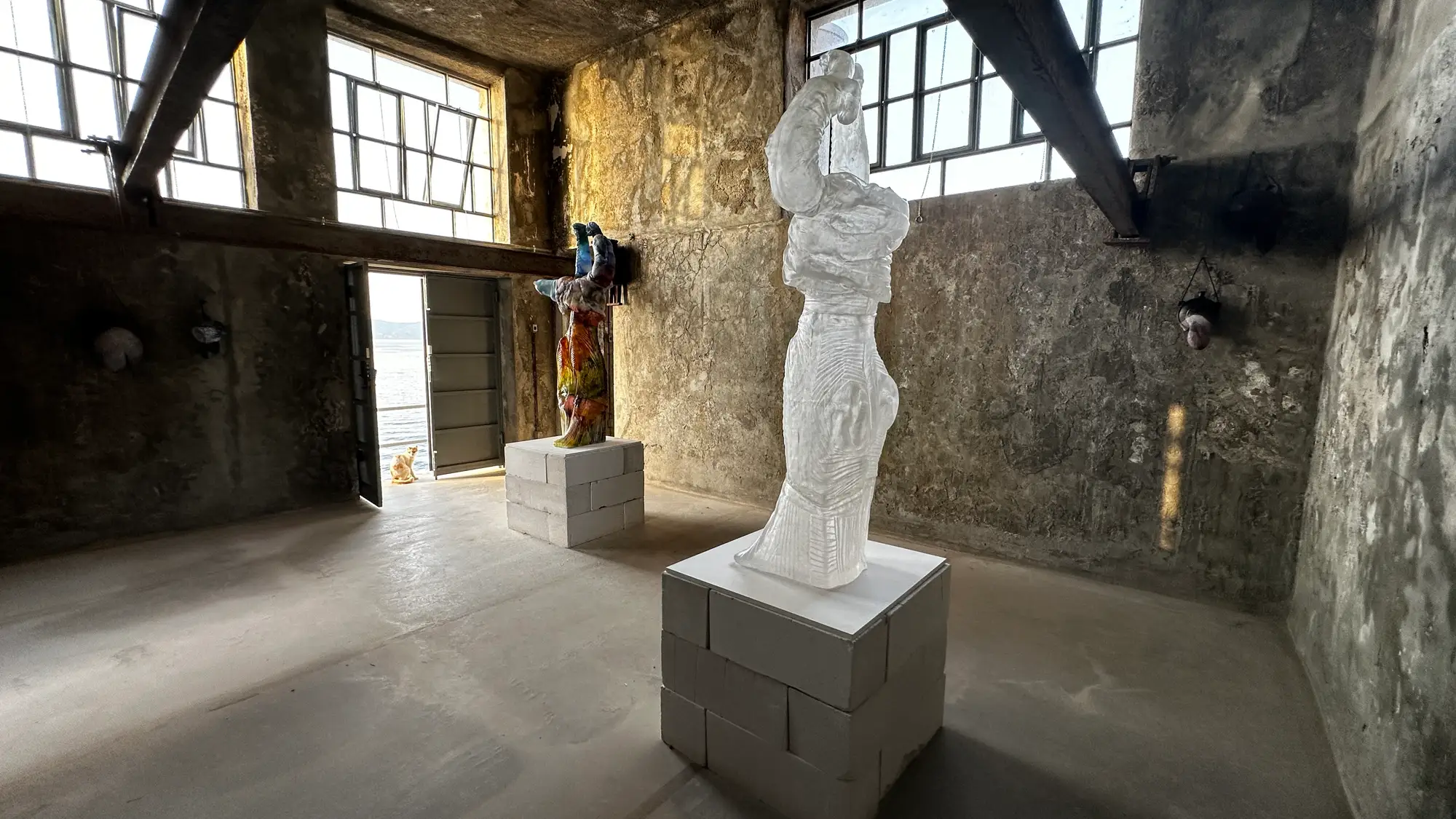
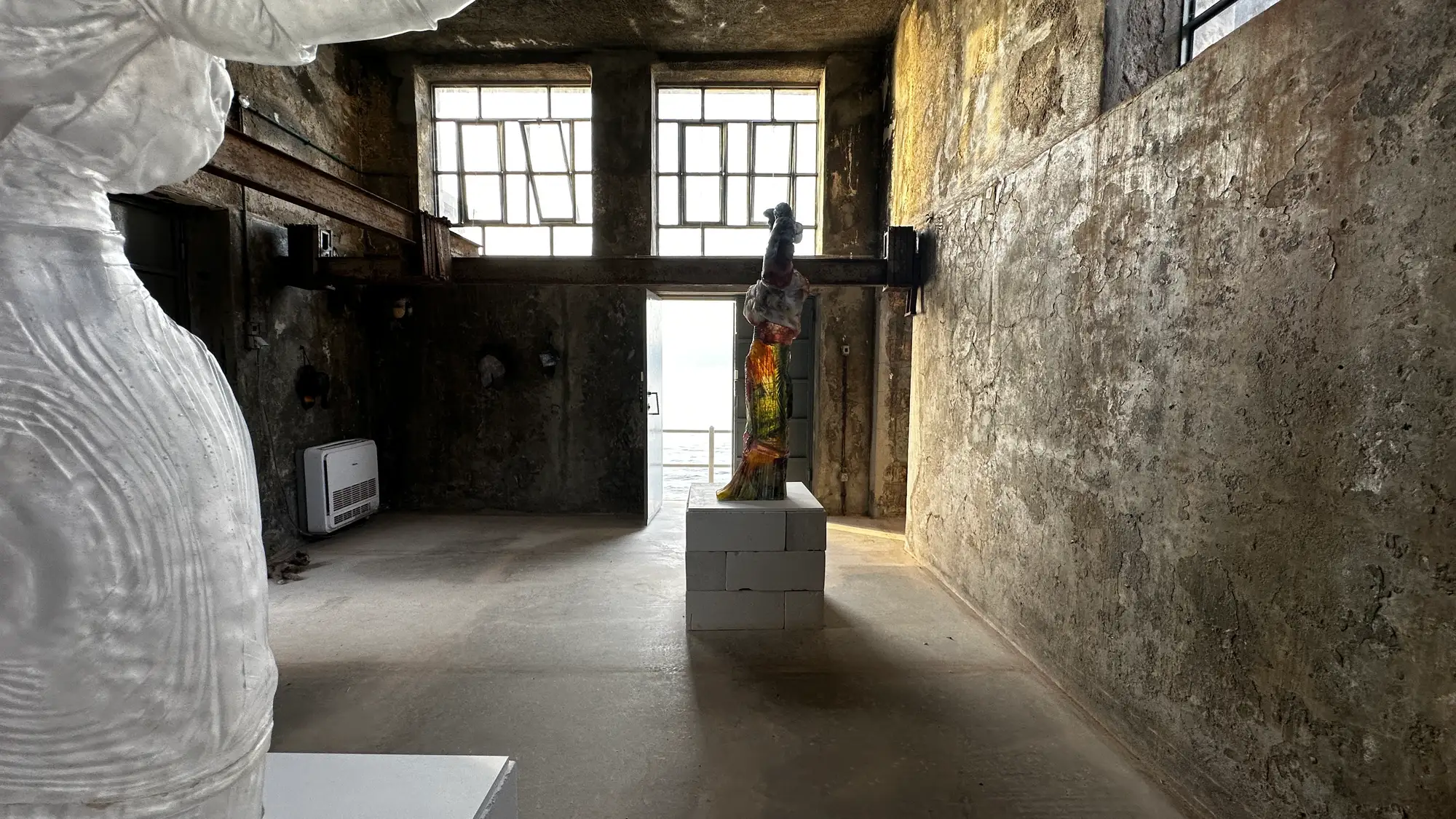
It’s always there to the left, a quiet announcement that the season has begun.
“Some ruins tell the truth. These ones tell the story we want to believe.”
A few days in, once the island’s slow rhythm has taken hold, breakfast with friends in the port, the murmur of tourists and locals, the steady clip of donkey hooves, we make the familiar pilgrimage along the water to the DESTE Foundation’s Project Space in the scorching heat.
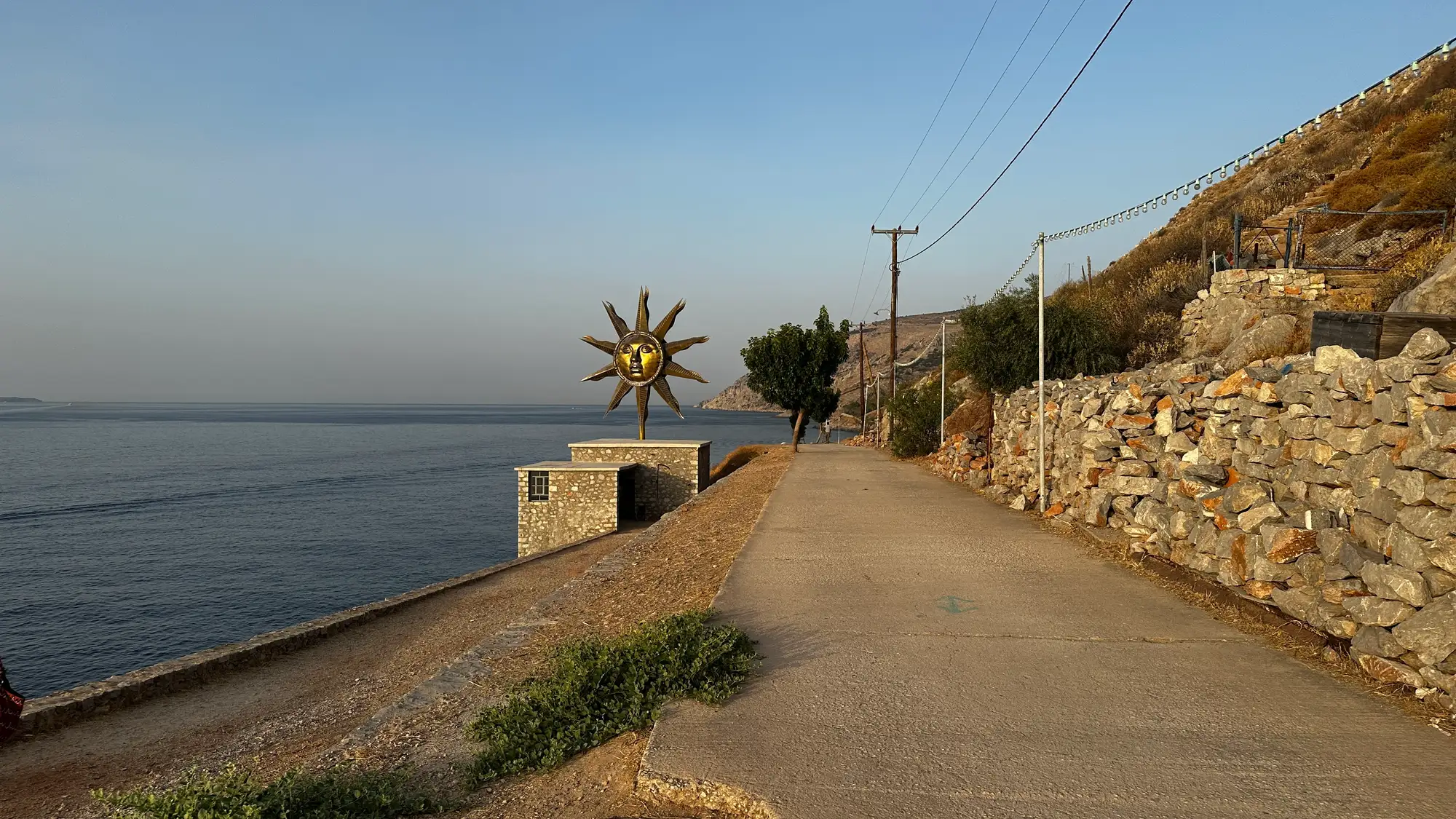
The path curves past sun-bleached walls and low stone outcrops, leading to where the sea opens wide.
There, the Slaughterhouse stands apart from the bustling port, promising the unexpected in its silence.
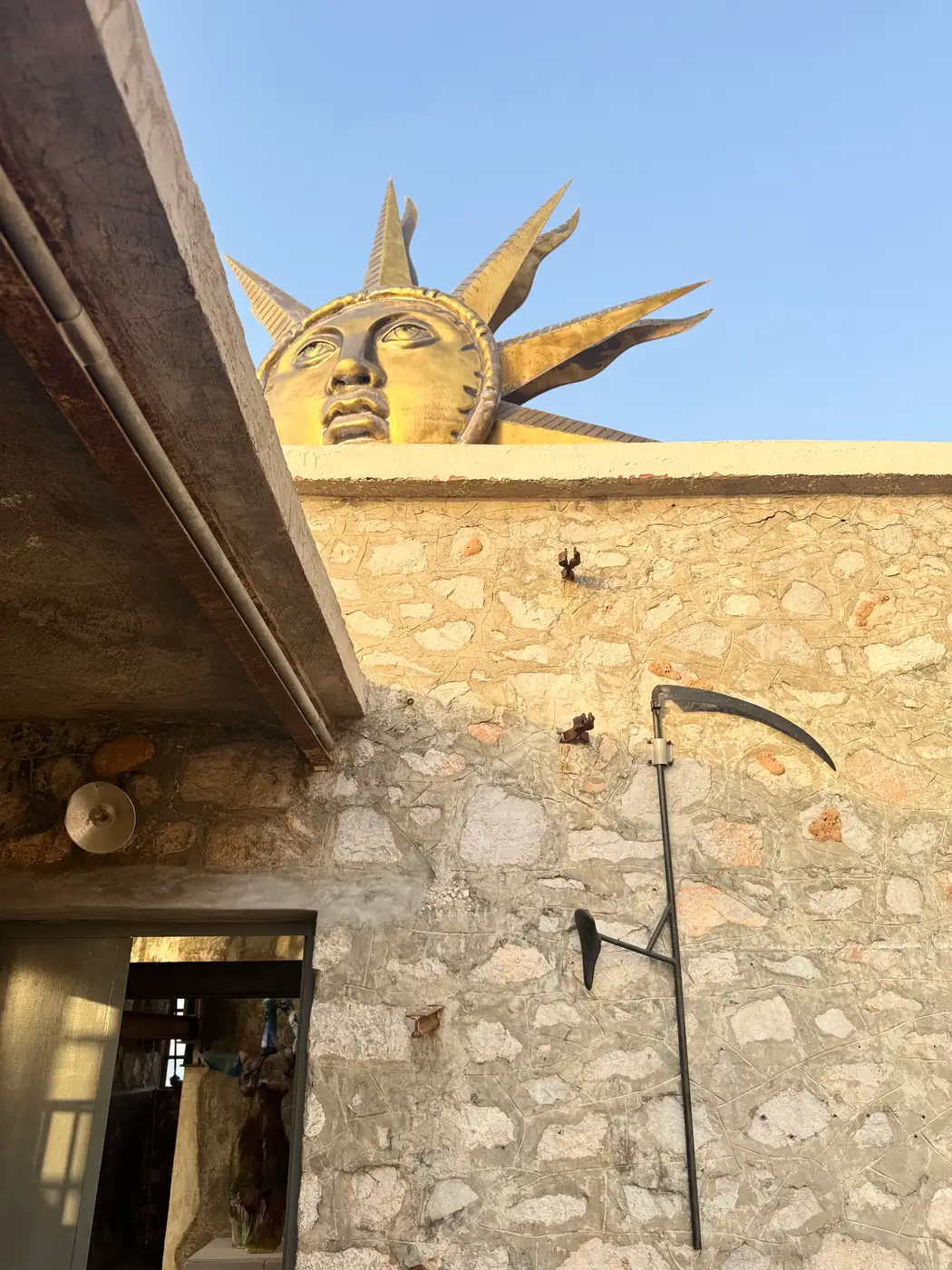
This year, the promise arrives in the form of Apocalypse Now and Then, the first major Greek exhibition by Romanian-born, New York–based artist Andra Ursuța (David Zwirner).
But the relics she offers are not of the past, they’re from a civilization that never existed, already in ruin before it could be remembered.
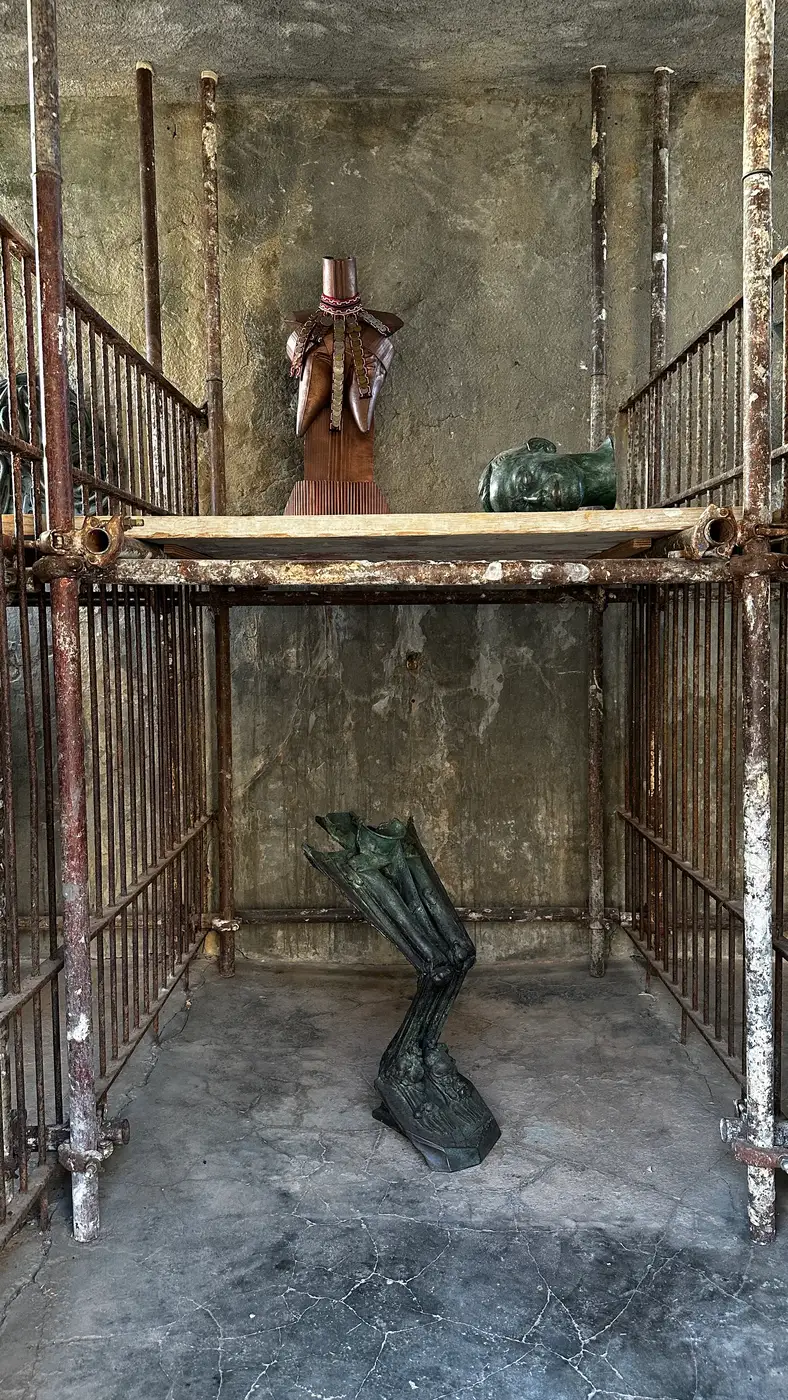
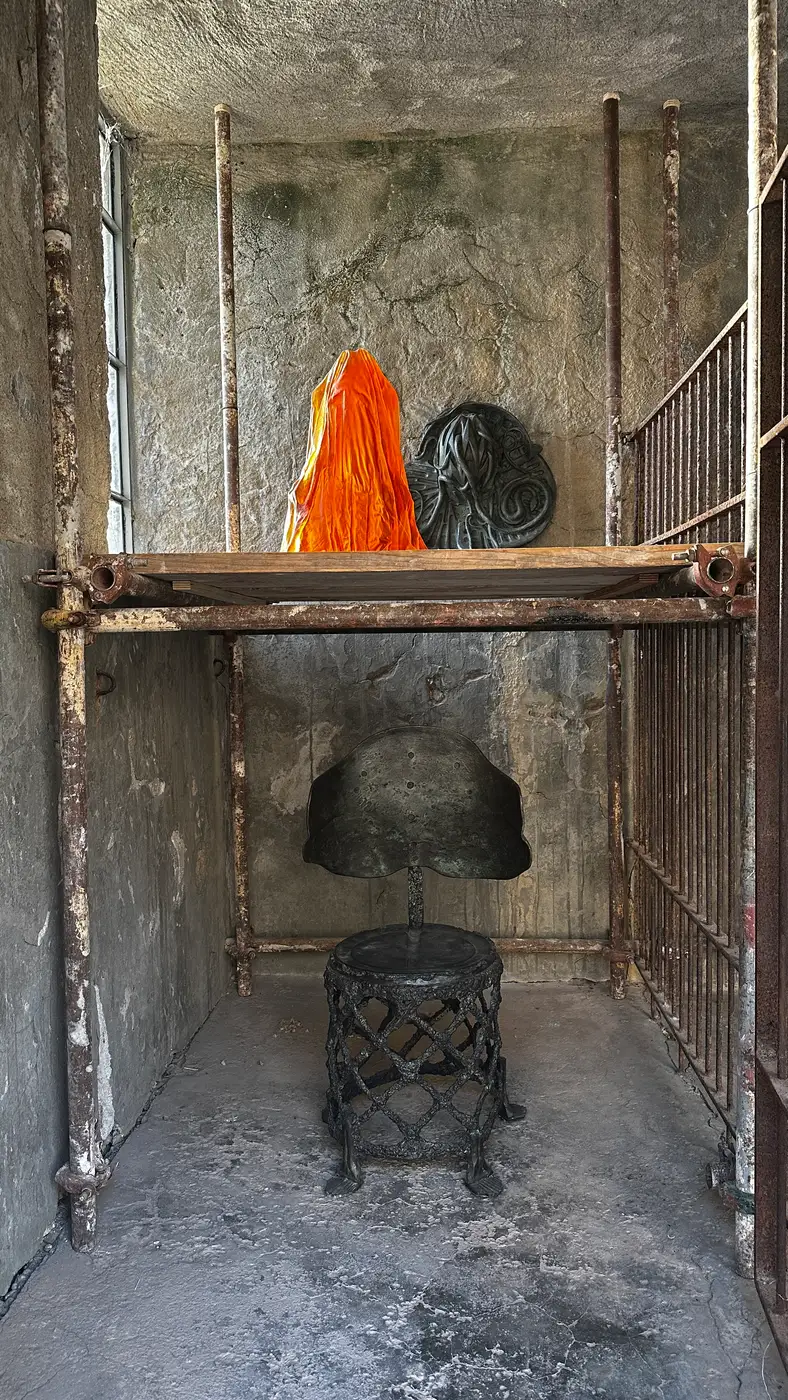
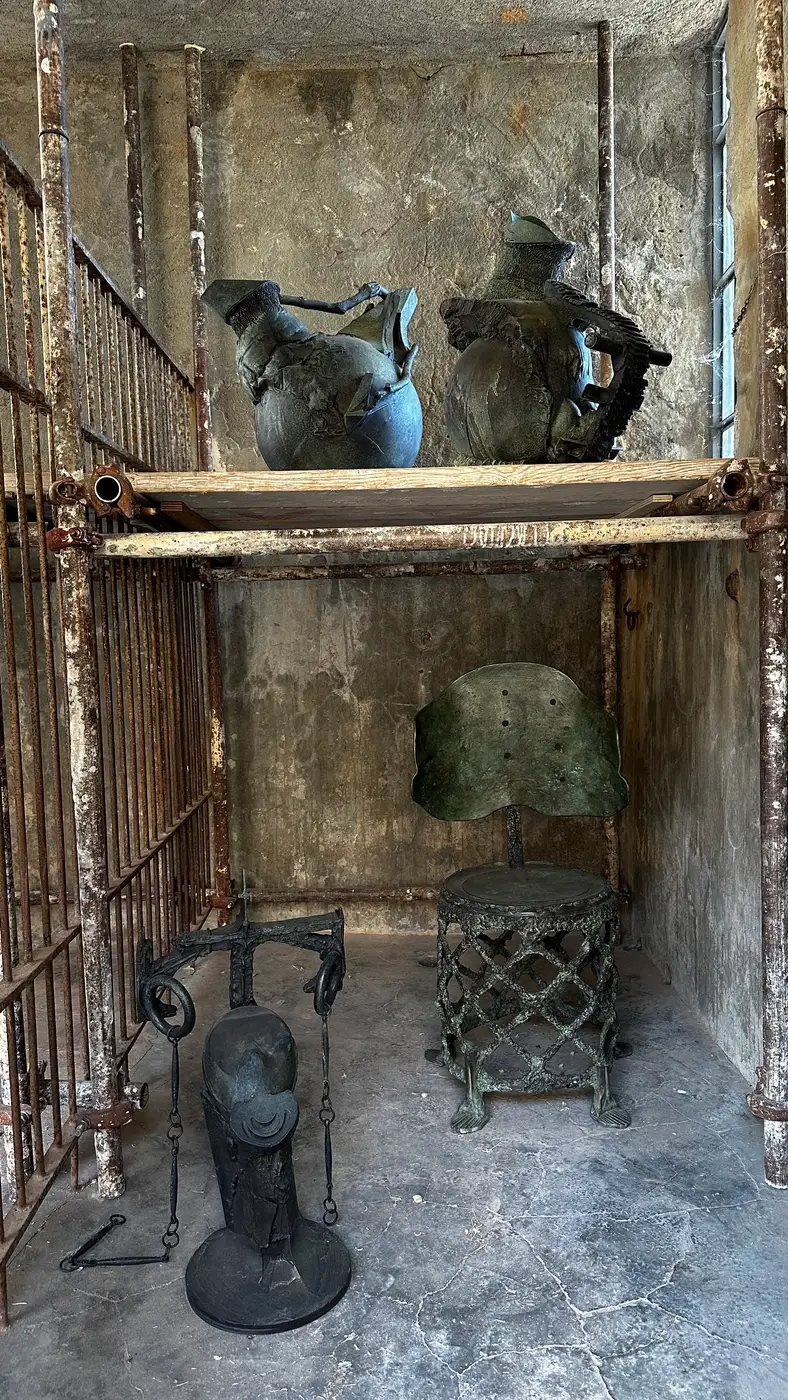
Andra Ursuța, Apocalypse Now and Then — exterior installations at the DESTE Foundation Project Space (Slaughterhouse), Hydra, 2025. Artifact-like bronzes, cast glass, and copper objects occupy the outdoor bays, echoing survival, ritual, and the body-as-relic. Image courtesy of Munchies Art Club.
Inside, the transformation is complete. The whitewashed interior is now a site of fictional archaeology, each object positioned with the gravity of museum display.
Bronze, glass, and composite forms stand like survivors of an invented history: weathered amphorae, fractured torsos, and strange votive figures whose patina feels centuries deep.
They are credible. They are beautiful. And they are lies.
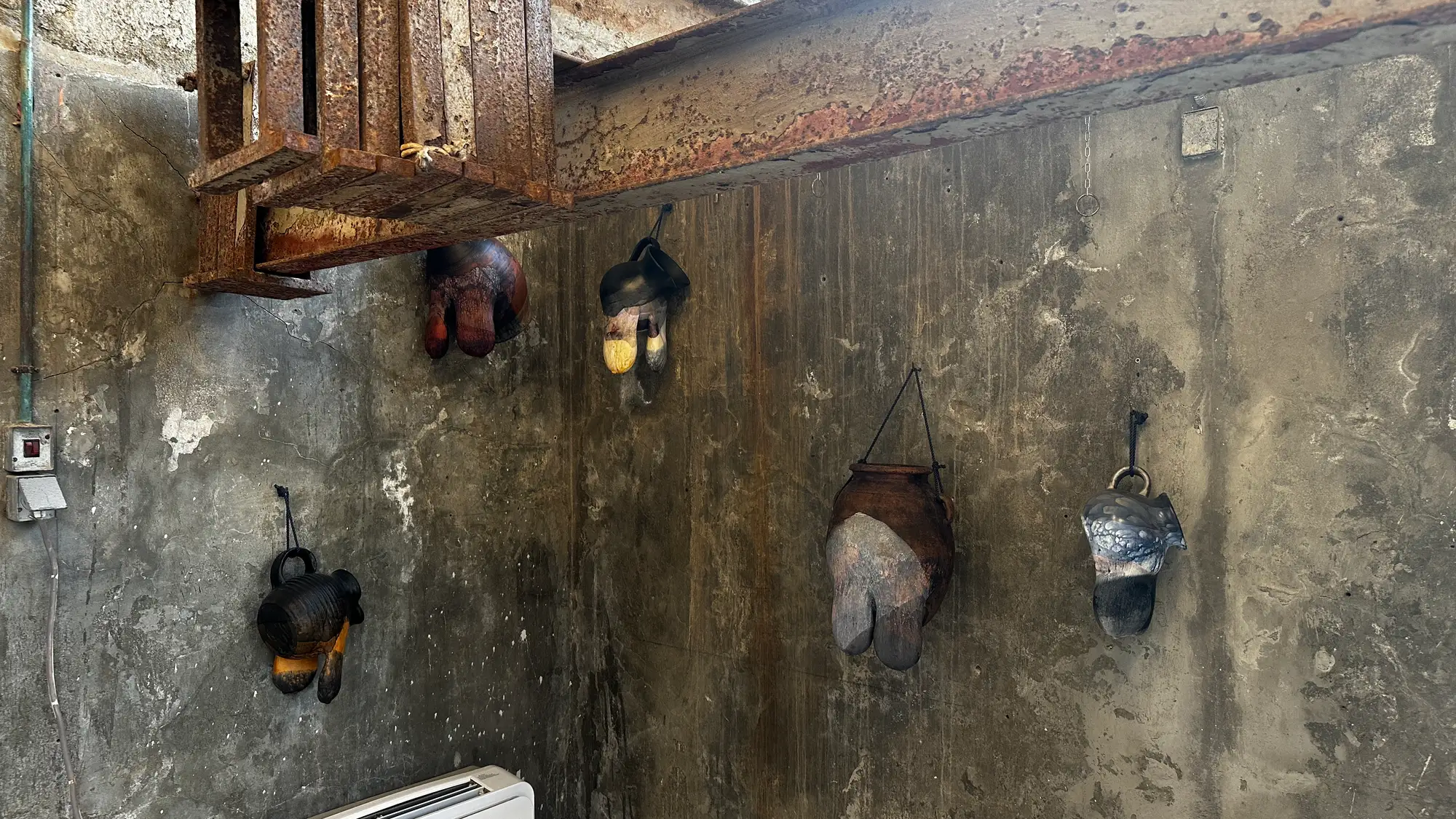
Ursuța draws from the authority of archaeology, mimicking the careful lighting, the reverent spacing, and the faux-weathered surfaces of historical artefacts.
Yet each work is an act of fabrication, a deliberate collision between minimal conceptual precision and an almost theatrical sense of decay.
These aren’t ruins preserved from collapse; they are collapses built to seduce.
Her Desolation Ware series, on view here, embraces the contradictions of craft and deception. In one corner, a bronze jug sprouts strange anatomical bulges, half vessel and half body.
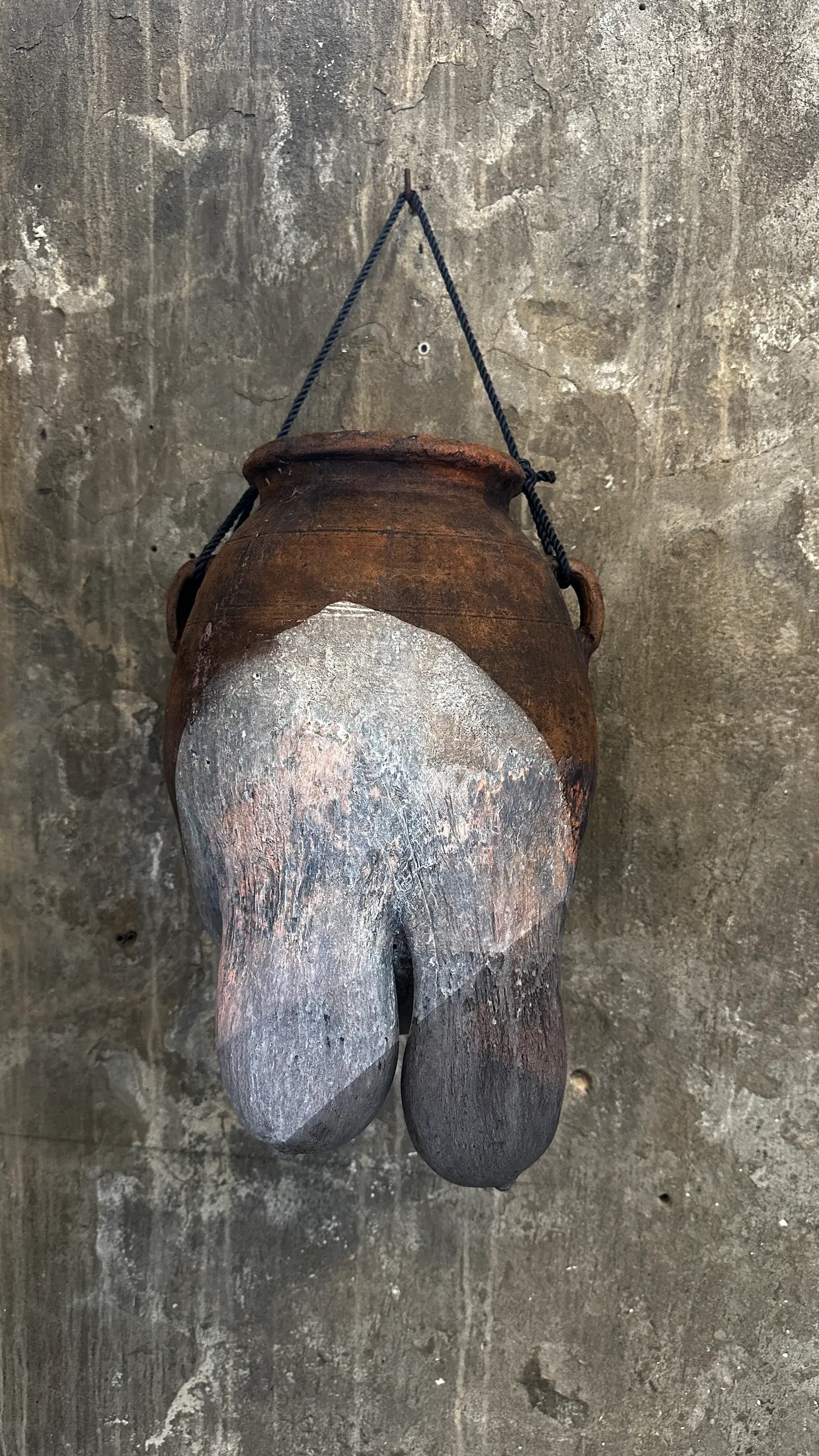
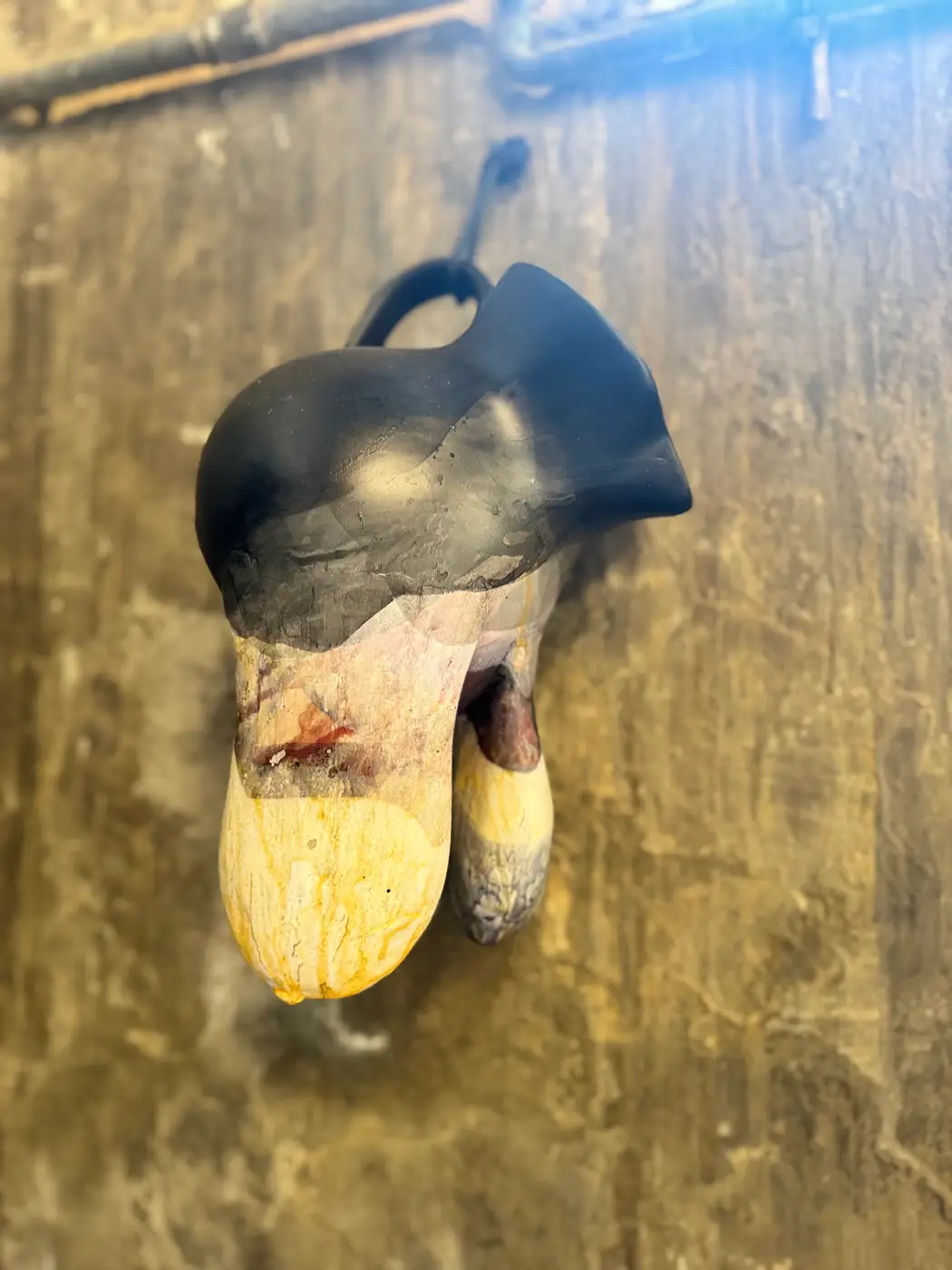
DESTE Foundation — Hydra: Inside the Slaughterhouse, Andra Ursuța’s votive-like containers hang like finds in an archaeological store, zoomorphic, domestic, and grotesque at once, bridging mythology, design, and dystopian ritual. From the “Desolation Ware” series. Image courtesy of Munchies Art Club.
Elsewhere, a seat-like form hovers between medieval torture device and ornate furniture, a work that seems to hold the memory of bodies without revealing their story. A Gorgon’s head emerges from a modern helmet, its snakes coiled in a frozen snarl.
In translucent resin, fragmented female torsos stand on stark white plinths, their arms raised in a frozen gesture that is both triumphant and defensive.
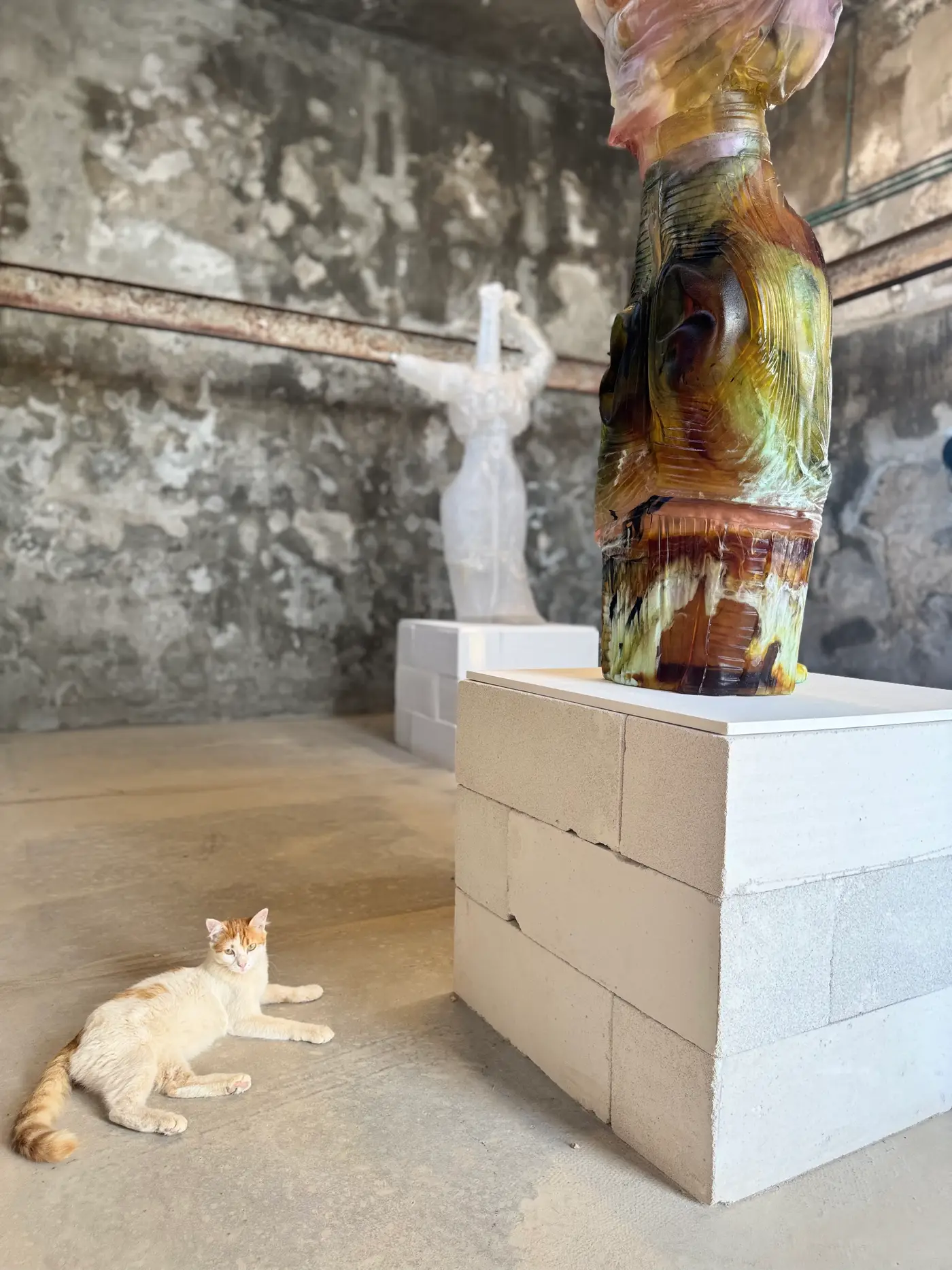
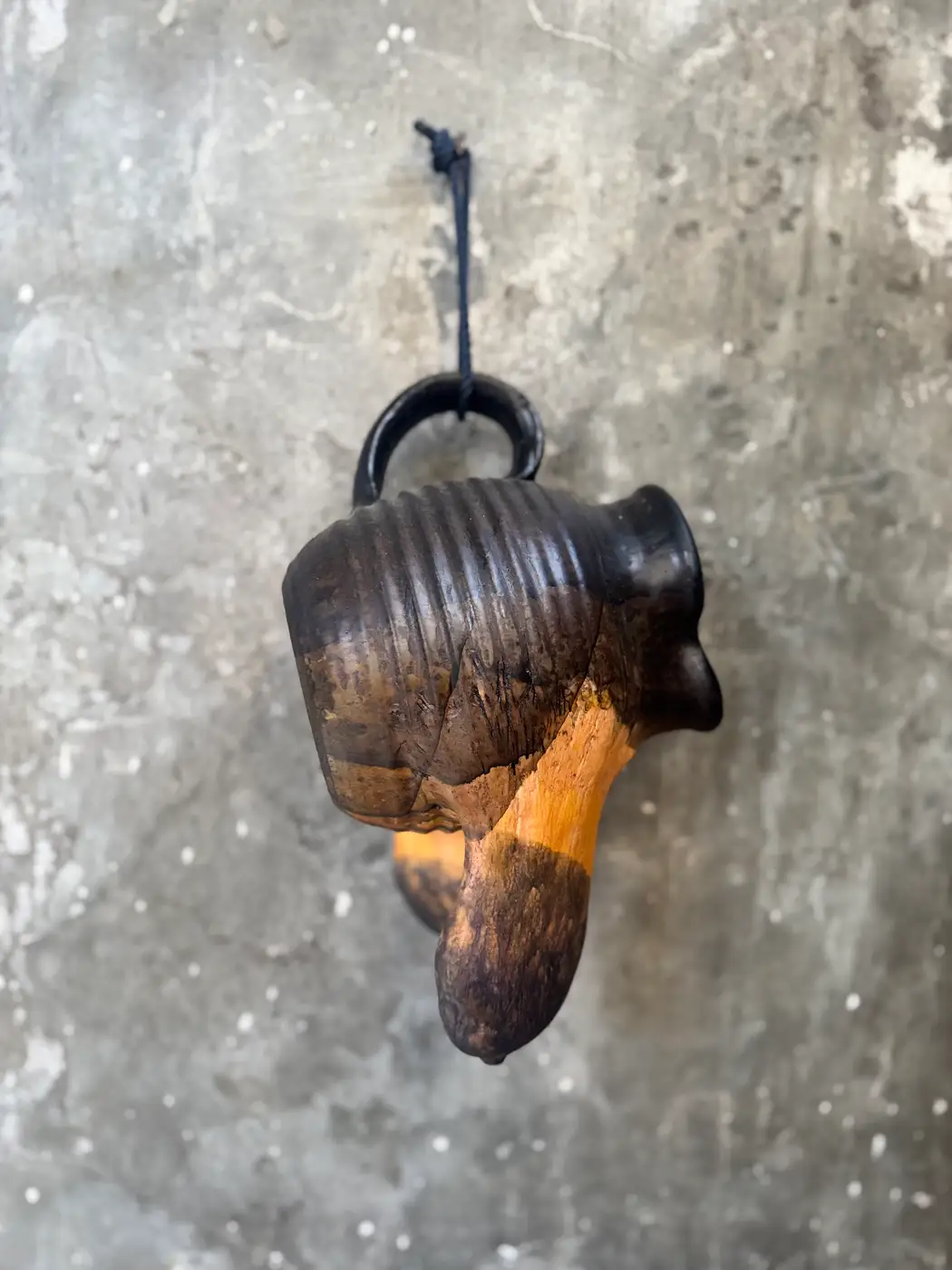
Andra Ursuța, Apocalypse Now and Then — interior view at DESTE Foundation Project Space (Slaughterhouse), Hydra, 2025. A polychrome cast-glass figure rises on block plinths while a local cat lounges like an unbothered guard, Hydra’s daily life quietly witnessing the show and (left) wall-hung vessel—jug meets body, ceramic-look patina over bronze, set against the Slaughterhouse’s raw concrete Image courtesy of Munchies Art Club.
Light from the tall industrial windows slices across their surfaces, turning the space into a living sundial.
Against the rough stone walls, smaller works hang like relics scavenged from a shipwreck, weathered pots fused with organic forms, their surfaces rich with false erosion.
Walking through, you become complicit in the fiction. You want to believe these objects are survivors from some lost Mediterranean empire.
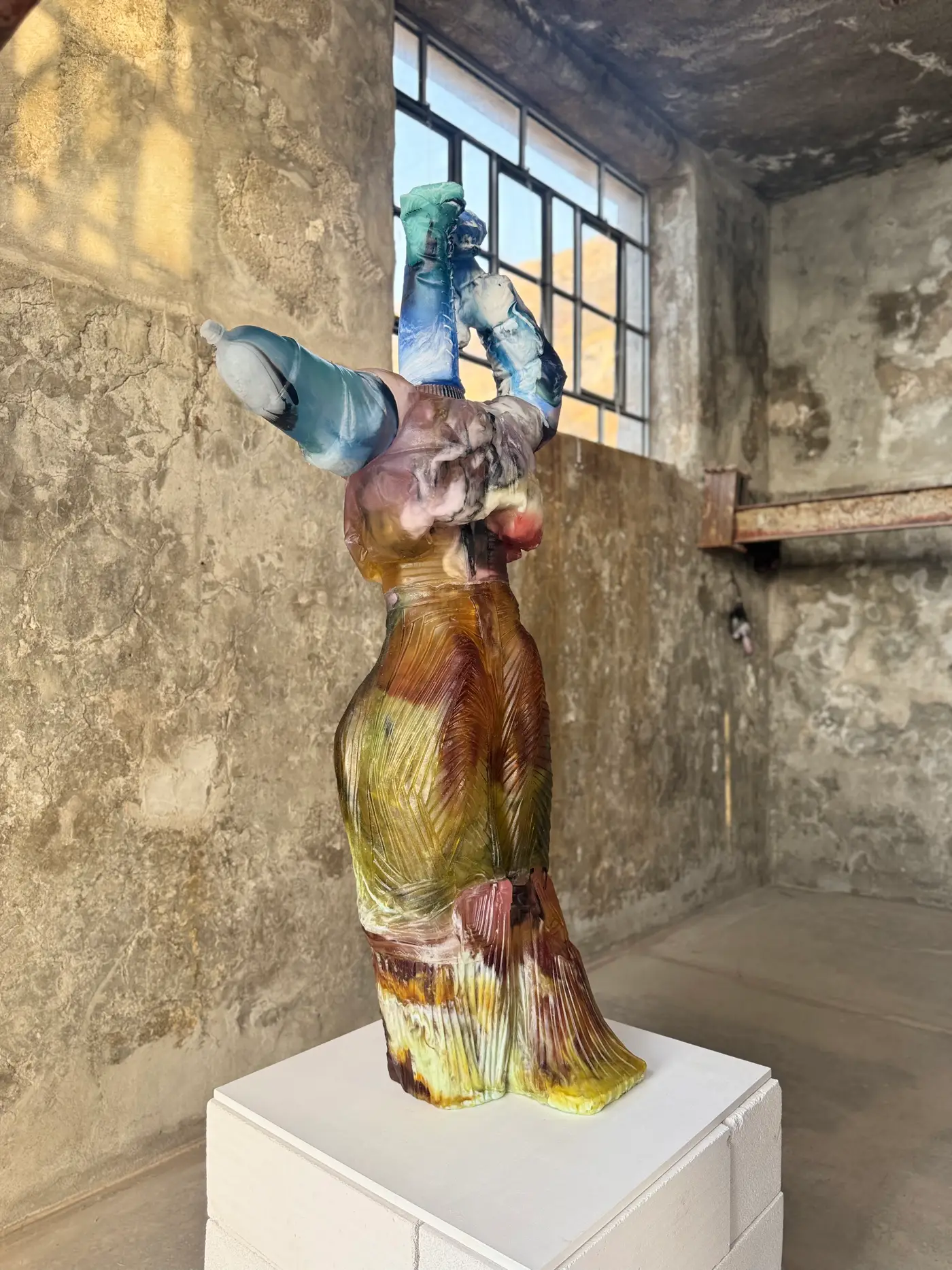
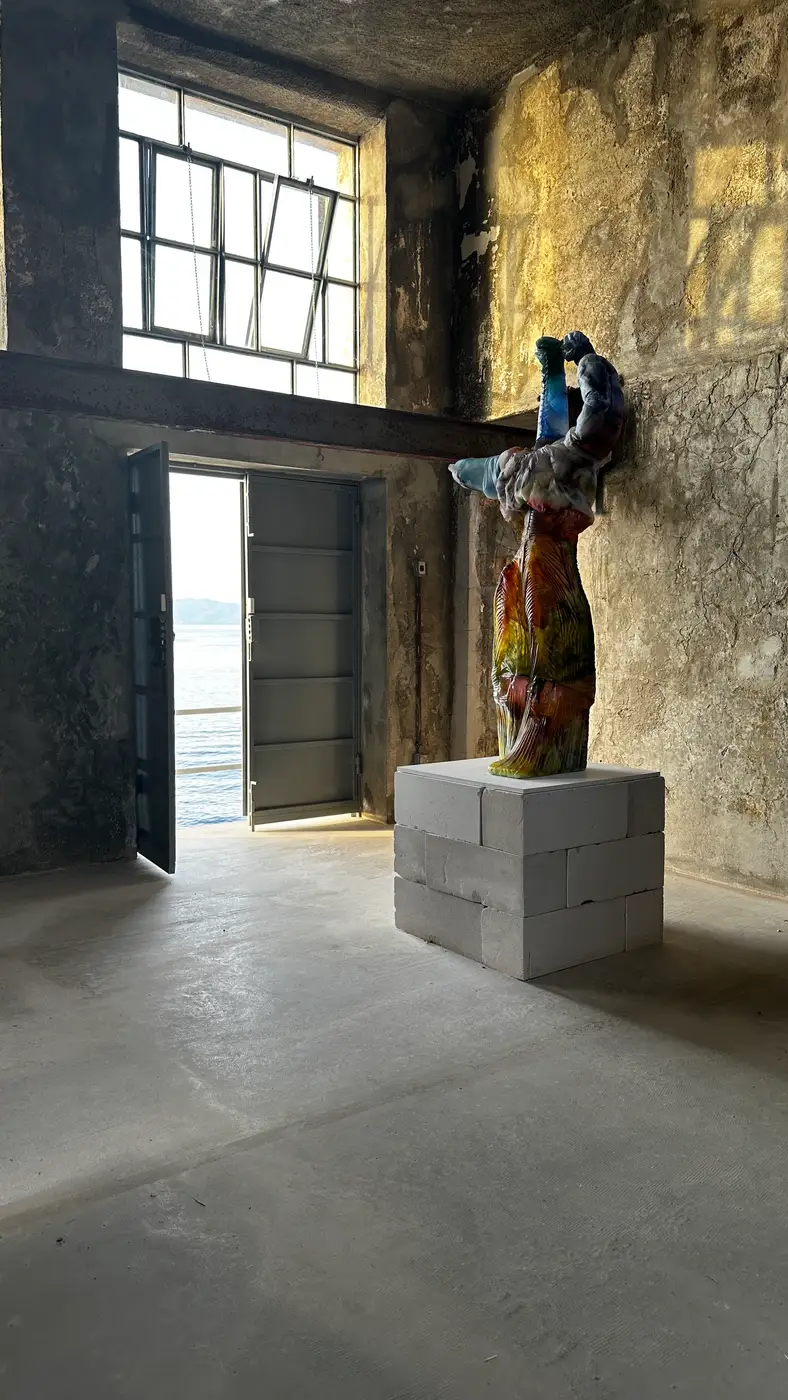
Andra Ursuța, Apocalypse Now and Then — cast-glass figures catch the late light inside the DESTE Foundation Project Space (Slaughterhouse), Hydra, with the Mediterranean shimmering just beyond the open door. Color-swirled bodies on block plinths turn the room into a luminous reliquary. Image courtesy of Munchies Art Club.
You want to imagine the ceremonies they belonged to, the hands that shaped them, the centuries that scarred them.
Ursuțan understands this desire. Her practice critiques the way museums and cultural heritage sites construct authority, and how audiences willingly surrender to it.
The patina of age, the language of preservation, the authority of the display case, these are tools of persuasion. In Apocalypse Now and Then, they become tools of invention.
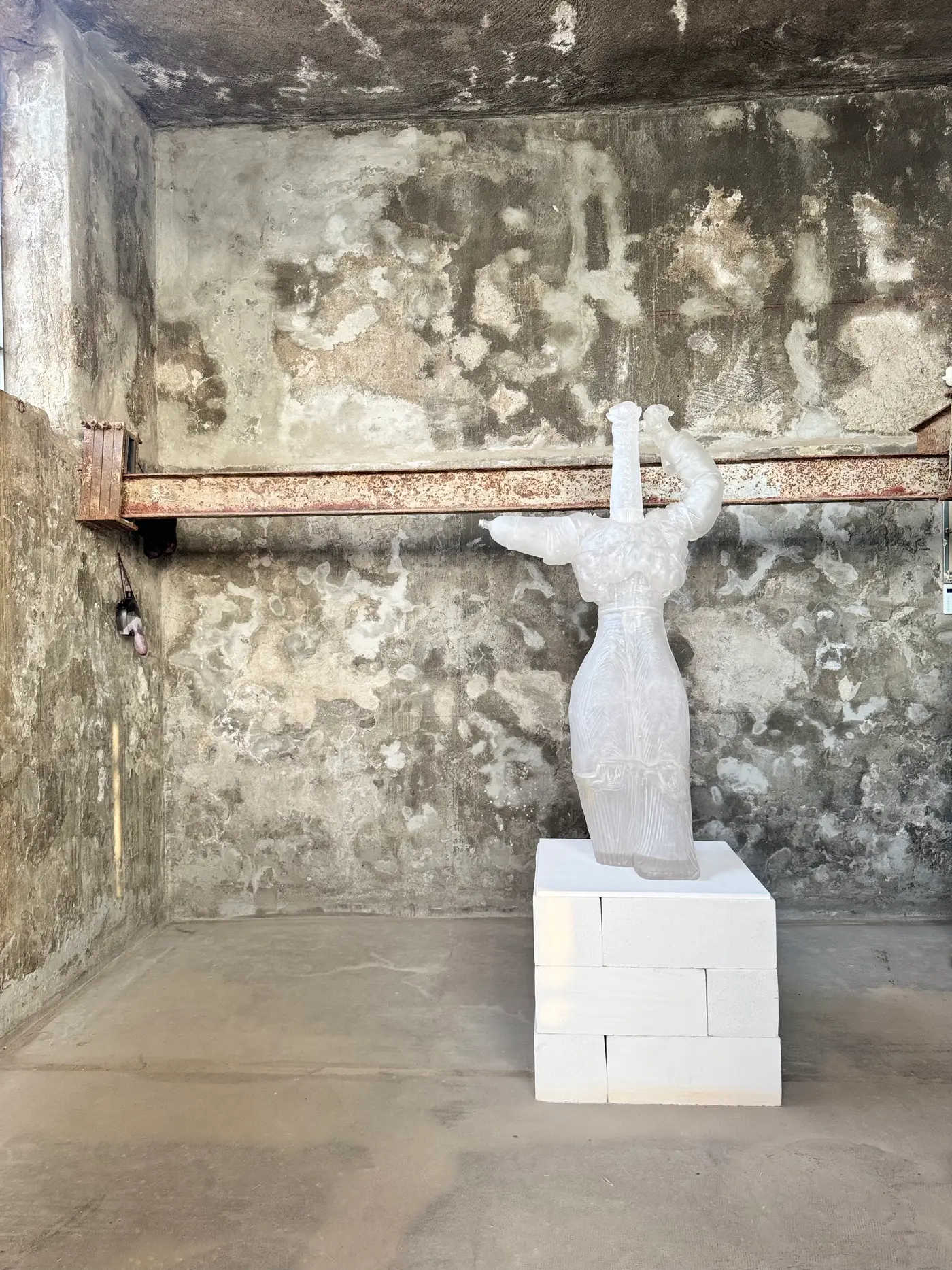
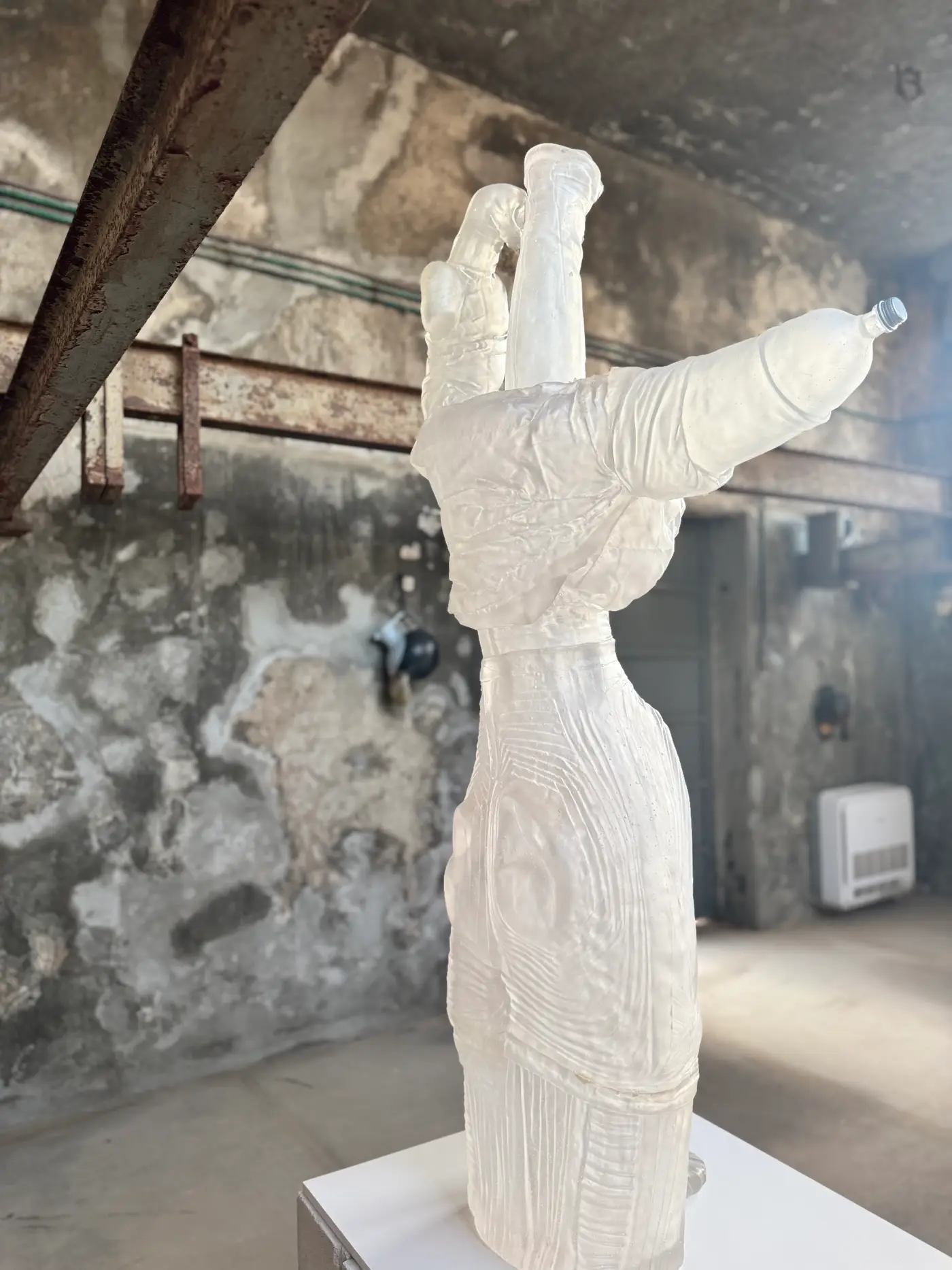
Andra Ursuța, Apocalypse Now and Then — a milky cast-glass figure fuses a classical torso with upraised, plastic-bottle–like arms, bridging myth and the present. A standout work that reads like archaeology of the future—antiquity meeting ocean waste and climate anxiety inside the Slaughterhouse, Hydra, 2025. Image courtesy of Munchies Art Club
The show also engages with art-historical misunderstandings, like the persistent myth that ancient sculpture was purely white marble, when in reality it was richly polychrome.
Ursuța takes these distortions and uses them as generative forces, crafting objects that inhabit the gap between truth and desire.
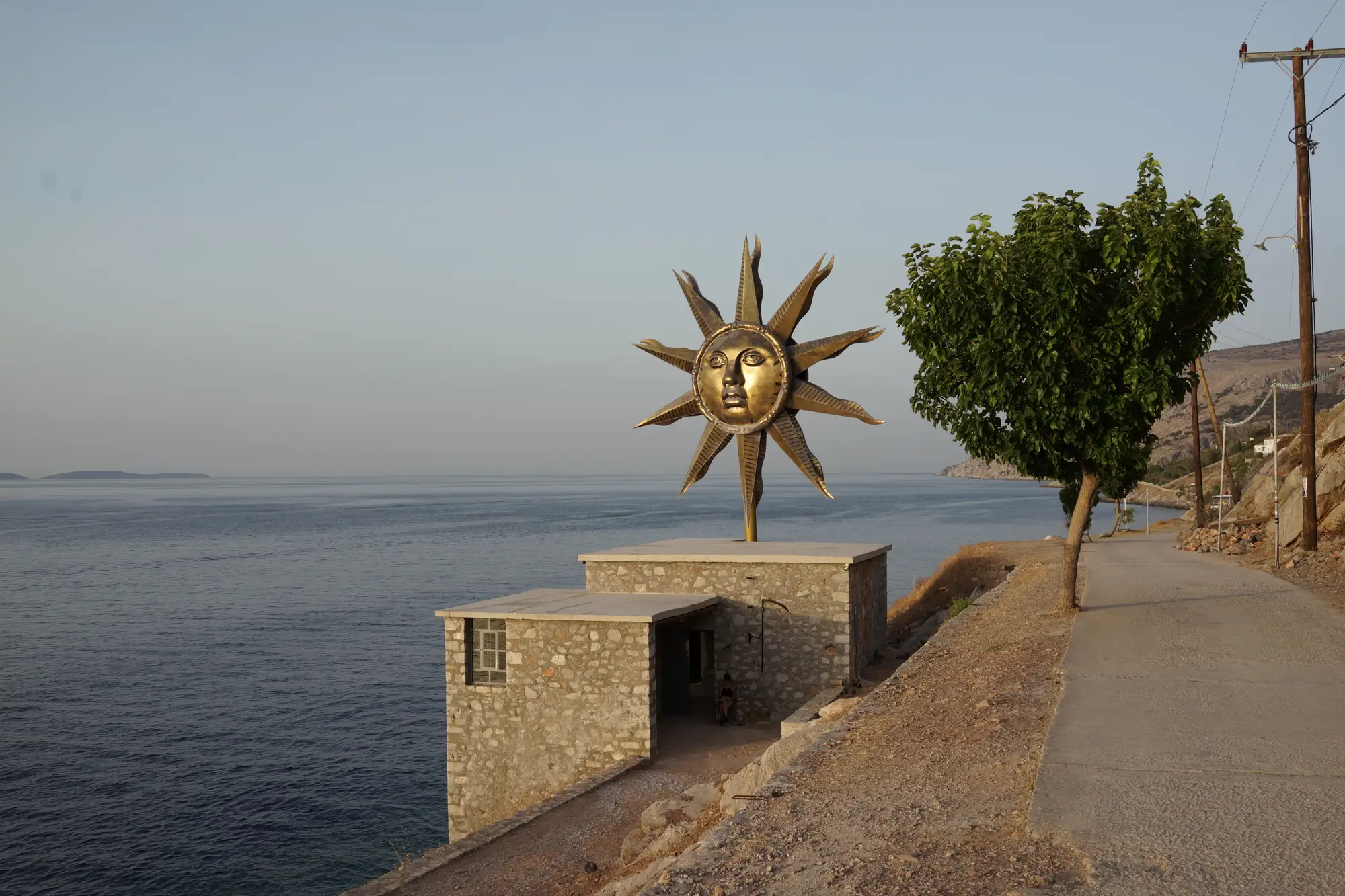
On Hydra, the effect is heightened. The island itself is layered with histories, real, rewritten, and imagined.
The Slaughterhouse has long been a space where contemporary art collides with this charged backdrop, and Ursuța’s installation feels inevitable here, like a ruin revealed at low tide.
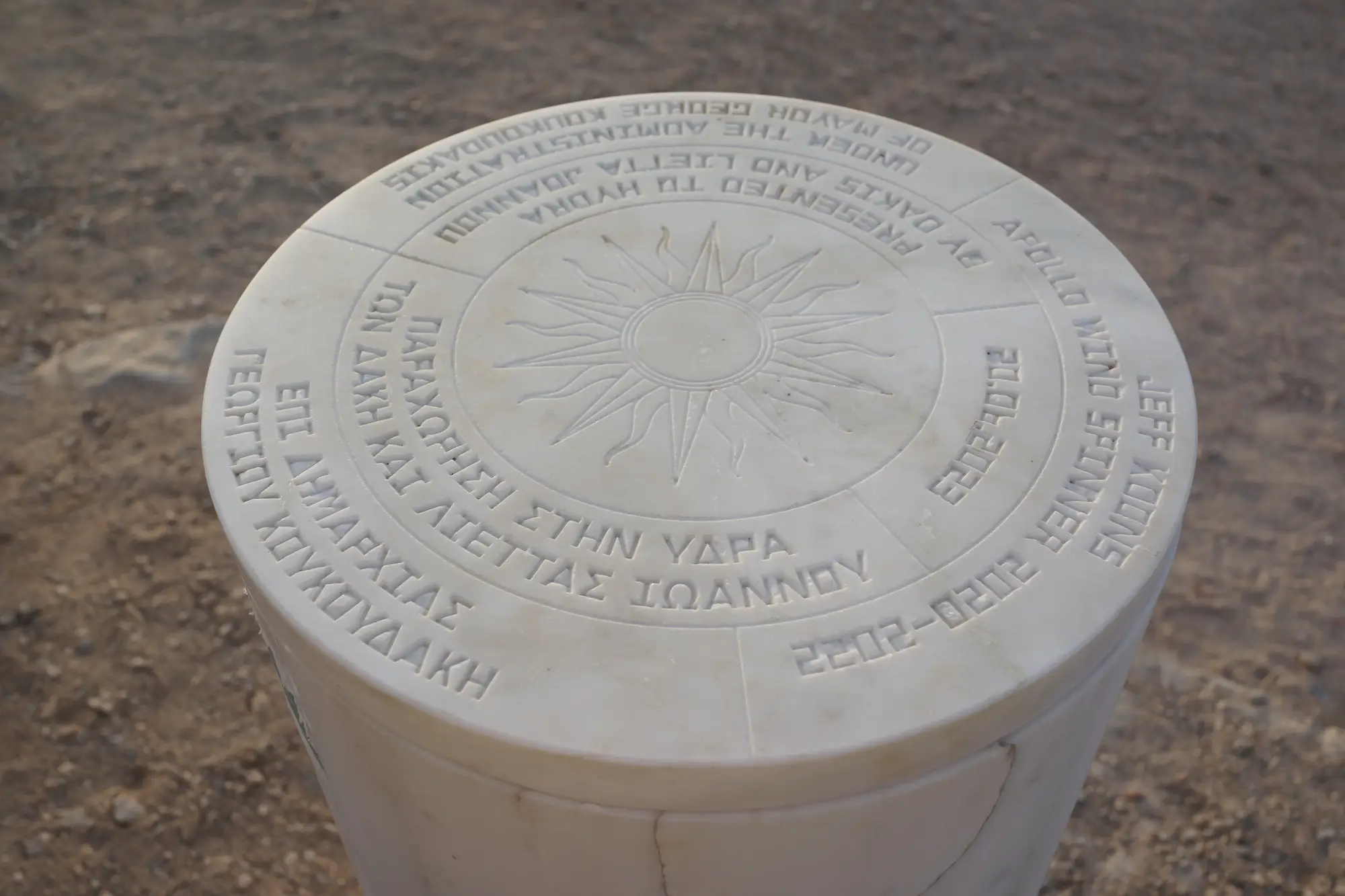
Perhaps these fictional ruins are the most honest record of all: not the events themselves, but the stories we choose to tell about them.
Apocalypse Now and Then
Andra Ursuța
DESTE Foundation Project Space, Slaughterhouse, Hydra Island, Greece
June 24 – October 31, 2025
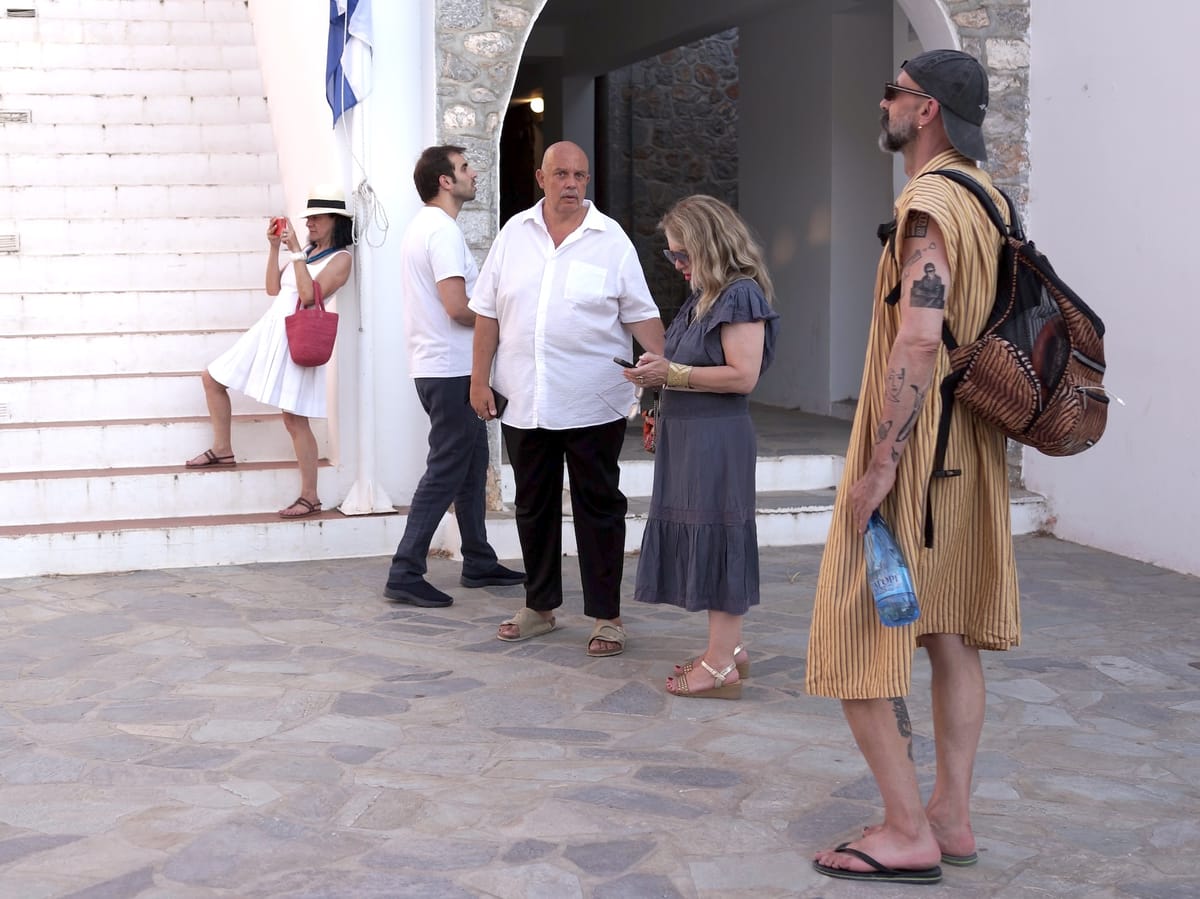
Hydra School Project 2025 - Lithos and Lethe curated by Dimitrios Antonitsis
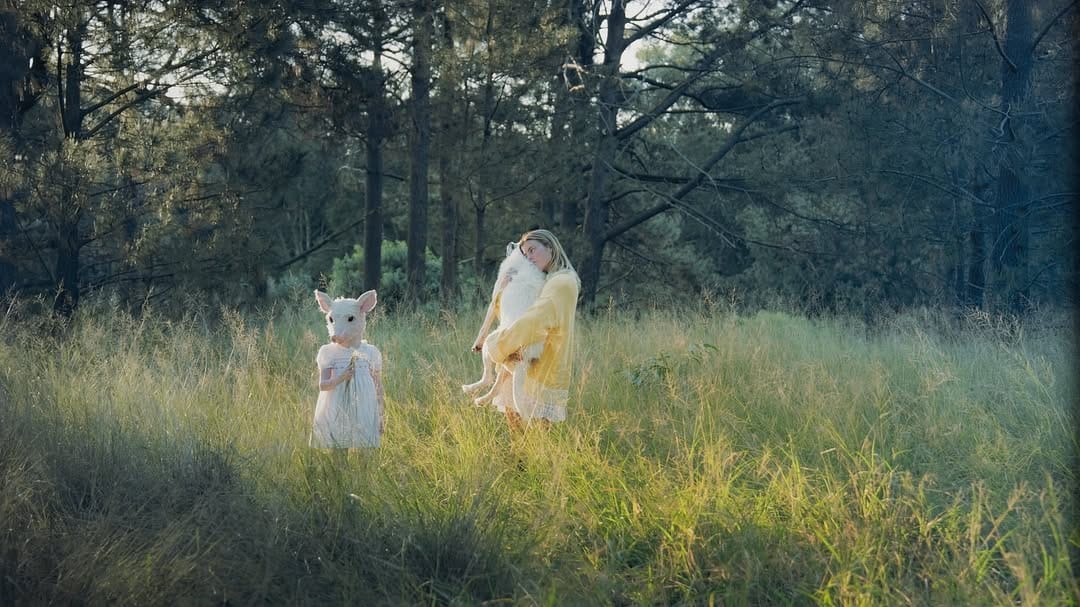

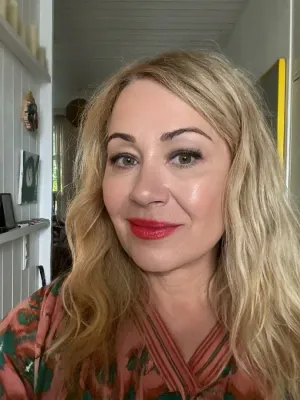
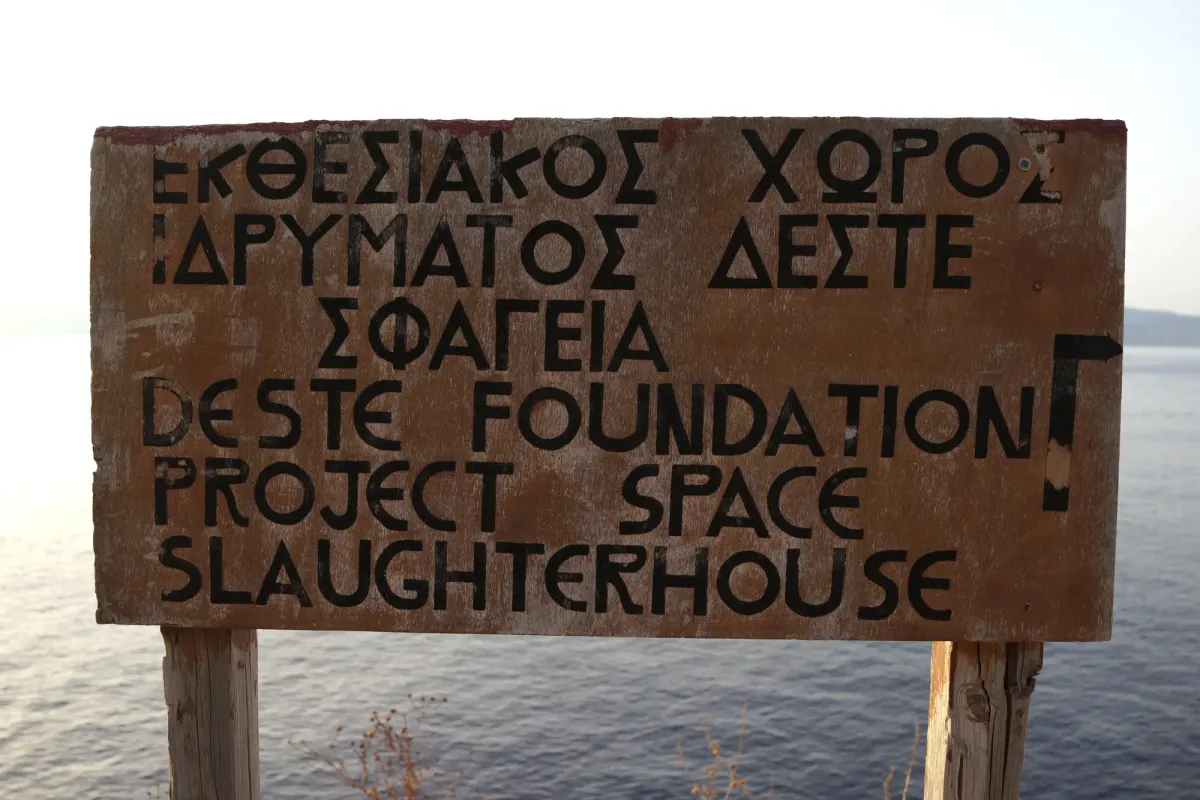



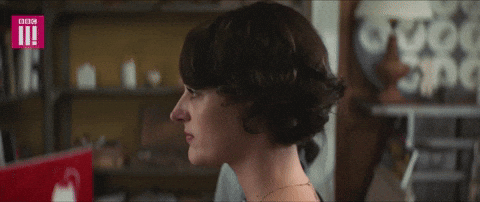
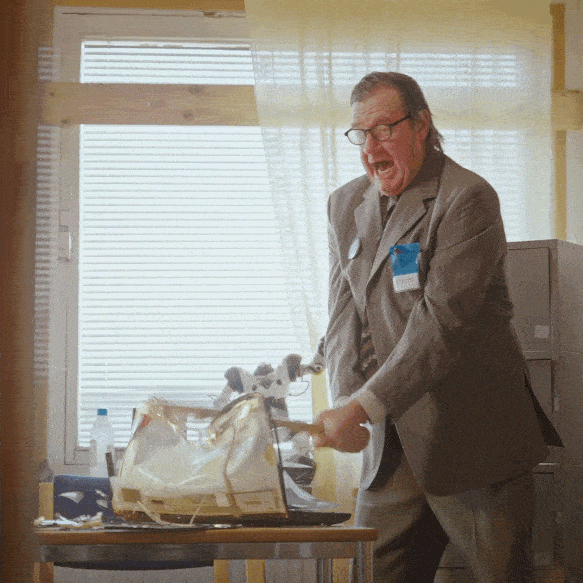
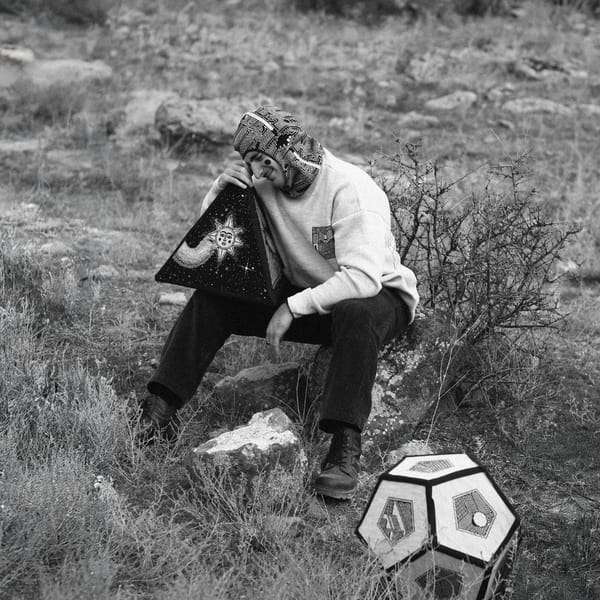
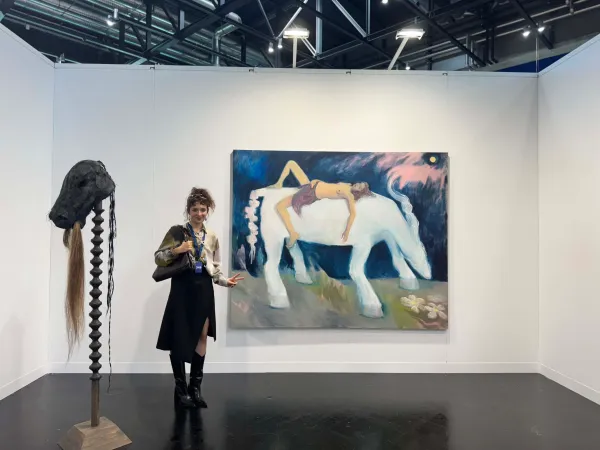
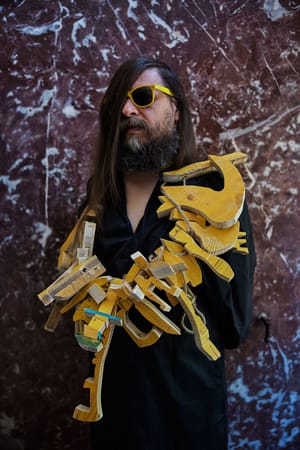
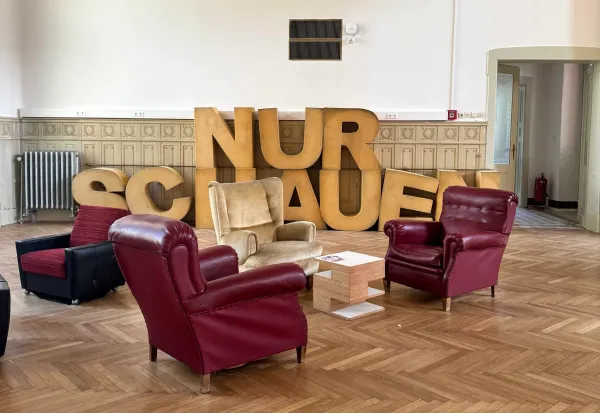
Member discussion